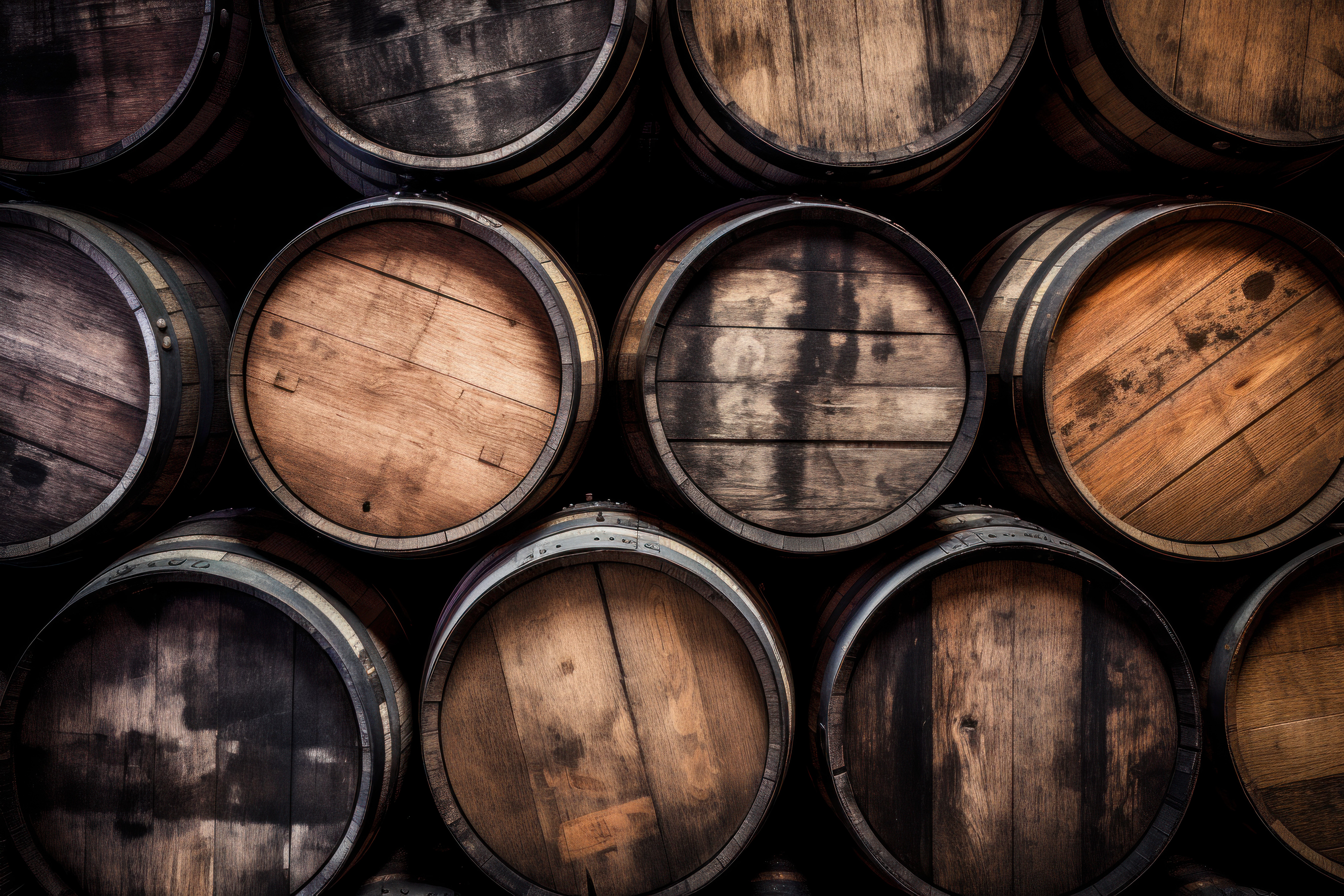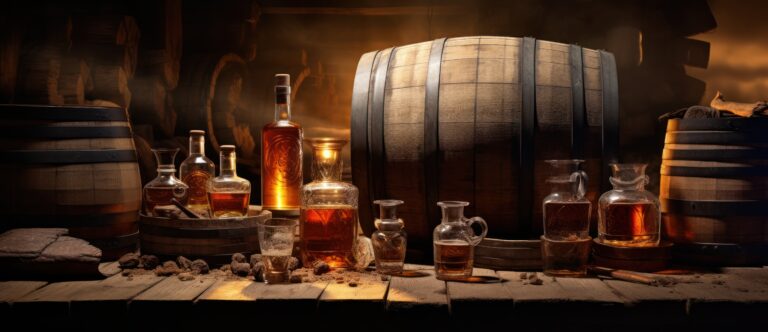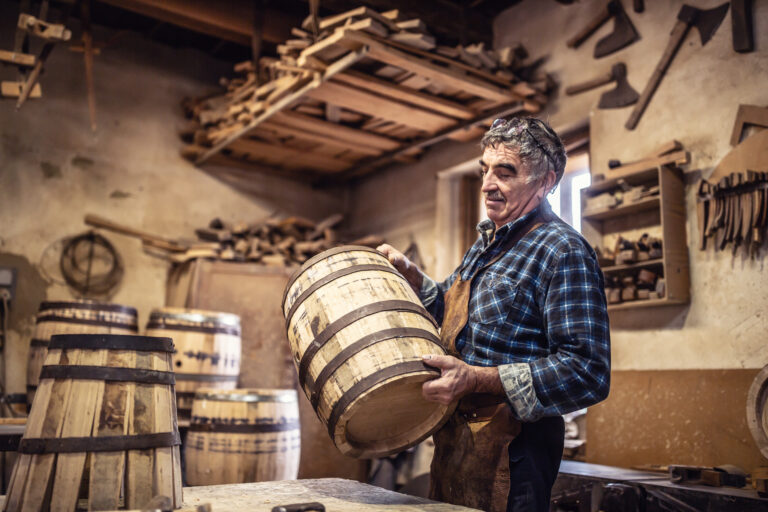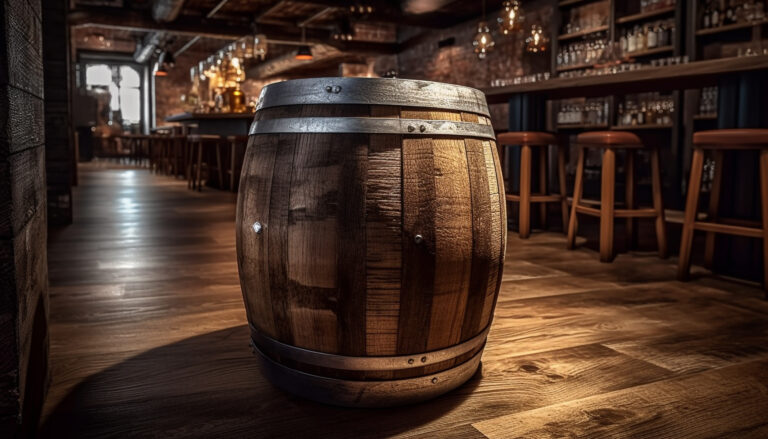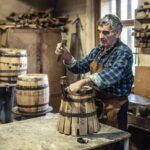Ah, whiskey! It’s a journey for the senses, isn’t it? From subtle and sweet to bold and smoky, every sip tells a story. But have you ever stopped to wonder what truly creates those incredible flavor variations? It’s not just about the grain or the still; it’s a deeply rooted secret hiding in plain sight: the barrel char. This unsung hero of the distilling world holds the key to the soul of your favorite dram.
The Secret’s in the Char: Why Barrel Toast Matters
Ever pondered why some whiskeys taste like a cozy campfire while others are light and breezy, bursting with fruit? The magic, my friend, is all in the barrel. More precisely, it’s about how much the inside of that oak barrel was scorched, or “charred,” before it was lovingly filled with aging whiskey. This char level is absolutely crucial; it dictates how the spirit interacts with the wood, directly influencing the flavor compounds that ultimately dance on your palate.
As any true whiskey aficionado knows, aging is the heart of developing those incredibly complex flavors. But “aging” is really just our fancy way of saying “letting the whiskey chill out in charred oak barrels for years.” The intensity of this charring, ranging from a gentle toast to a deep, dark char, is custom-tailored to the specific whiskey profile the distiller wants to craft. Generally speaking, the more intense the char, the more pronounced those rich oak, vanilla, and caramel notes become. Opt for a lighter char, and you’ll often discover delightful fruity and floral flavors.
So, the next time you sidle up to the bar, take a moment to consider how the char level within those patiently waiting barrels has shaped the very taste of your drink. Every master distiller meticulously selects these barrels to create the exact flavor profile you’re about to enjoy. Sip slowly, let your senses guide you, and see if you can truly detect the skilled handiwork of the cooper in every complex, nuanced note. Your whiskey adventure is just beginning!
What Exactly Is Barrel Char?
Barrel char isn’t some mystical process; it simply refers to the degree of toast or char on the inner surface of a whiskey barrel. When these oak barrels are toasted, the wood is exposed to heat, which beautifully caramelizes its natural sugars and fundamentally alters its chemical makeup. The specific char level profoundly influences how much of the wood’s characteristics are imparted to the whiskey during its extended stay, its maturation period.
Light Char: The Gentle Touch
A light char means the barrel experienced a quick, gentle toast. The wood will retain a light brown hue, and you’ll still be able to see the wood grain clearly. This lighter char allows more subtle wood flavors to emerge, such as delicate hints of vanilla, cinnamon, and classic oak. Interestingly, whiskey often seems to age a bit faster in a lightly charred barrel, developing its character with a lighter hand.
Medium Char: The Balanced Act
A medium char is a moderate toast, resulting in a rich brown color and subtle, sometimes slightly smoky, burnt wood flavors. At this level, the wood’s grain starts to become obscured. A medium char strikes a beautiful balance between the wood flavors and aromas and the whiskey’s inherent characteristics. Whiskeys aged in medium-char barrels frequently boast delightful notes of caramel, maple, and toasted nuts.
Heavy Char: The Robust Influence
A heavy char means the barrel endured an intense, prolonged toast. The wood becomes a deep, dark brown, almost black, and its grain pattern is completely obscured. This robust char imparts more assertive, smoky, and spicy wood flavors, often bringing notes of clove, nutmeg, and even chocolate to the forefront. This strong wood influence typically means whiskey aged in heavily charred barrels needs more time to mellow out and truly reach its full potential.
Ultimately, the chosen char level is a fundamental factor in shaping a whiskey’s distinctive aroma, color, and flavor. Master distillers deliberately select barrels with specific char levels based on the precise flavor profile they aim to achieve. Understanding these char levels empowers whiskey lovers to better appreciate the incredible liquid in their glass.
The Different Levels of Barrel Char: A Deep Dive
When whiskey matures in charred oak barrels, the char level significantly impacts how the spirit develops over time. This crucial charring process, sometimes called “charring the barrel,” effectively opens up the wood’s pores, allowing the whiskey to absorb more of those wonderful flavor compounds from the oak.
The most common char levels used in whiskey aging are often designated as #1 char, #2 char, and #3 char. However, you’ll also encounter the incredibly intense #4 char.
#1 Char (Light Char Level): The Subtle Sweetness
A #1 char, or light char, involves minimal burning of the raw wood, exposing it to a gentle toast. This allows more subtle oak flavors to emerge in the whiskey. Many Irish whiskeys famously utilize #1 char barrels to achieve their characteristic lighter profiles.
Flavor Profile Highlights:
- Apple, pear, citrus: Expect bright, fresh fruit flavors to truly shine.
- Honey, vanilla, coconut: Discover delicate floral and sweet aromas.
- Light, crisp, vibrant: It’s an easy-drinking, incredibly accessible flavor profile.
- Retains distillate character: The original character of the spirit remains wonderfully prominent.
As whiskey spends more time in a #1 char barrel, it will gradually develop more oak and spice notes, all while preserving its fresh, fruity core. However, these flavor changes happen at a slower pace compared to the effects of a heavier char. For those who appreciate an aged, complex whiskey that still prioritizes fruit and floral notes, a longer maturation in a light char barrel can produce an exceptionally balanced spirit. A #1 char truly leads to a whiskey with its own distinct personality: lighter, fresher, and wonderfully fruit-forward.
#2 Char (Medium Char Level): The Caramel & Vanilla Sweet Spot
A #2 char, often referred to as a medium char, creates barrels that impart rich caramel and vanilla flavors to the whiskey. This medium char exposes more of the wood sugars and lignin, which gracefully break down into delightful flavors during the aging process.
Flavor Profile Highlights:
- Caramel and Vanilla Notes: You’ll undoubtedly notice prominent notes of caramel and vanilla in the finished whiskey. The heat from charring converts wood sugars into those lovely caramel flavors. The breakdown of lignin, which gives wood its rigid structure, also contributes that appealing vanilla essence. These sweet, creamy flavors are often more pronounced in medium-charred barrels.
- Balanced Oak Influence: A medium char strikes an excellent balance between wood flavors and the inherent distillate character. The whiskey largely retains its own unique flavor profile derived from the grains and yeast. The oak enhances and complements, rather than overwhelms, the spirit’s natural aroma and taste. For many distillers and consumers, this harmony of flavors is simply ideal.
- Less Tannic Bitterness: Compared to a heavy char, a #2 char imparts less of that sometimes astringent bitterness from wood tannins. The quicker, hotter charring of a heavy char (#3-#4) can extract more of the wood’s tannic compounds, which can create a drying, mouth-puckering sensation. A medium char skillfully avoids over-extraction of these bitter tannins, allowing the natural sweetness of the wood and distillate to truly shine.
Overall, a #2 char level produces a very approachable whiskey with enticing caramel and vanilla notes that aren’t overpowered by oak. This medium char allows the essential character of both the distillate and the wood to mingle in a truly delicious balance.
#3 Char (Heavy Char Level): Richness and Spice
The heavy char barrels, also known as level 3 char, consistently produce whiskey with rich flavors of vanilla, cocoa, and spice.
Flavor Profile Highlights:
- Intense Wood Flavors: The heavy char exposes more of the wood sugars in the oak, imparting truly intense wood flavors to the whiskey. You’ll detect notes of vanilla, caramel, and toffee, alongside hints of spice like nutmeg or cinnamon. The wood tannins also come through, adding a subtle dryness to expertly balance the sweetness.
- Darker Color: Whiskeys aged in heavy char barrels tend to be noticeably darker in color due to the intense charring. The charred wood releases more compounds that impart a deep amber hue to the spirit. Many bourbons leverage heavy char barrels to achieve their signature deep, warm color.
- Smoky Nuances: The heavy char can impart subtle smoky nuances to the flavor profile of the whiskey. As the wood chars, it releases aromatic compounds that provide notes of char, toast, and smoke. The whiskey absorbs these compounds during aging, resulting in delicate hints of smoke that beautifully mingle with the wood and spice flavors.
- Longer Aging: Whiskeys aged in heavy char barrels often demand longer aging periods to soften the intense influence of the wood. Those robust wood flavors need ample time to mellow and seamlessly integrate with the whiskey. While a lighter char might produce a well-rounded whiskey in 3 to 5 years, a heavy char typically requires 6-10 years or even more to achieve that optimal balance of wood and whiskey flavors.
The heavy char barrel truly produces a whiskey with a bold, robust flavor profile featuring rich wood sugars, spice, and a delightful touch of smoke. With extended aging, these wood-forward flavors evolve into a harmonious, complex spirit. The heavy char is absolutely essential for creating many classic, full-bodied American whiskeys.
#4 Char (Heavy Plus / Alligator Char Level): The Bold Statement
The heavy plus char level, also famously known as #4 char or “alligator char” due to its distinctive, cracked appearance, produces barrels with a thick, profound layer of char on the inside. This intense, thicker char significantly impacts the flavor profile of whiskeys aged within these barrels.
Flavor Profile Highlights:
- Strong, Robust Flavors: This heavy char exposes the whiskey to even more carbon and lignin, leading to bolder, often smokier flavors. You’ll likely detect hints of toasted nuts, coffee, cocoa, and pronounced spice. The whiskey absorbs a tremendous amount of color from the barrel, frequently developing into a deep amber to a rich mahogany shade.
- Pronounced Oak Influence: With much more oak surface area exposed, #4 char barrels impart a very strong oak flavor. Tannins and vanillins come through prominently in the taste. The oak sugars caramelize intensely during charring, translating into deep notes of burnt sugar, molasses, and maple syrup.
- Exceptional Age-ability: The robust flavors and powerful tannins mean that whiskeys aged in #4 char barrels tend to hold up exceptionally well to longer aging. The bold flavors integrate beautifully over time without ever becoming overwhelming. Many premium, aged bourbons and certain Scotches are matured in heavily charred barrels to develop their incredible complexity.
- Popular Whiskeys: You’ll find the #4 char influence evident in the rich color and bold, oak-forward flavor profiles of many well-known bourbons like Maker’s Mark, Knob Creek, and Bulleit Bourbon. Some Scotches also leverage this char level for specific expressions.
Ultimately, the #4 char level creates a barrel that profoundly transforms the finished whiskey. While lighter char levels yield more subtle effects, the heavy char elevates the spirit into a truly bold, complex elixir with standout oak and caramel flavors. For whiskey drinkers seeking an intense, deeply barrel-aged experience, #4 char is tough to beat.
How Distillers Masterfully Use Different Char Levels
For a distiller, the art of charring barrels profoundly impacts the flavor and aroma compounds that develop during the crucial aging process. Char levels describe how deeply the inside of the barrel is burned before it’s filled with whiskey. The specific char level exposes the whiskey to varying amounts of carbon and lignin, which are responsible for those desirable sweet and smoky flavors.
Light Char (#1 Char): Preserving Delicate Notes
A light char, or #1 char, gently scorches the inside of the barrel. It exposes the whiskey to minimal carbon and lignin, resulting in very subtle smoky flavors. Whiskeys aged in barrels with a light char tend to emphasize the natural flavor of the grain or mash bill. Many distillers opt for a light char for wheated bourbons or lighter whiskey styles where they want to preserve delicate, inherent flavors.
Medium Char (#2 Char): Achieving Balance
A medium char, or #2 char, moderately scorches the inside of the barrel. This exposes the whiskey to moderate amounts of carbon and lignin, skillfully balancing the natural flavors of the whiskey with enticing hints of sweetness and smoke. Many distillers prefer a medium char for bourbons and other whiskeys where they aim to impart a harmonious balance of oak and natural grain flavors.
Heavy Char (#3 and #4 Char): Boldness and Depth
A heavy char, whether a #3 or #4, involves extensive scorching of the inside of the barrel. This exposes the whiskey to high amounts of carbon and lignin, leading to pronounced smoky flavors that can sometimes overpower subtler grain notes. Whiskeys aged in heavily charred barrels tend to be quite oaky, with strong caramel and vanilla flavors, along with a distinct smoky finish. Many distillers typically reserve heavy char barrels for bold, robust, and often smoky styles of whiskey.
By strategically employing different char levels, distillers can craft whiskeys with truly distinct flavor profiles to cater to a wide array of tastes. From light and delicate to robust and smoky, char levels provide an essential tool for influencing how whiskeys develop their unique character during maturation in the barrel. Choosing the right char for your whiskey is absolutely key to achieving the desired flavor and aroma in the final product.
Whiskey Barrel Char Levels: Frequently Asked Questions
The degree of charring within a whiskey barrel significantly impacts the aging of the whiskey. Char levels simply refer to how much the inside of the barrel is burned before it’s filled. Generally, the more intense the burning, the higher the char level.
- Level 1 Char (Light Char): This level features a light toast and subtle charring, allowing more flavor to be extracted gently from the wood. Whiskeys aged in light char barrels tend to be lighter in color and showcase prominent notes of vanilla, honey, and citrus.
- Level 2 Char (Medium Char): A medium char involves moderate charring, creating a beautiful balance of wood and char flavors. Whiskeys aged in medium char barrels often present flavors of caramel, toasted nuts, and spice, with a medium amber color. This is a widely popular char level favored by many distilleries.
- Level 3 Char (Heavy Char): This level denotes significant charring, leading to robust char and toast flavors. Whiskeys aged in heavily charred barrels tend to be darker in color with strong notes of char, oak, and sometimes smoke. The heavier char effectively reduces the direct impact of the uncharred wood on the flavor.
- Level 4 Char (Alligator Char): An alligator char is characterized by very heavy charring that causes the wood to crack and resemble alligator skin. This results in a mix of char chunks and intense charring. Whiskeys aged in alligator char barrels tend to be very dark with intense charred and smoky flavors, occasionally described as burnt or even acrid. While less common today, it’s a testament to the extremes of charring.
Ultimately, the optimal char level for a whiskey barrel often comes down to the distiller’s artistic vision and the precise flavor profile they aim to achieve. However, understanding how these char levels influence the aging process truly helps whiskey lovers appreciate how their favorite drams develop such complex and distinctive flavors.
Final Thoughts on Charred Barrels and Whiskey Flavor
So there you have it – the fascinating fundamentals of whiskey barrel char levels and their profound impact on the aging process of your beloved brown spirit. While lightly charred barrels tend to produce lighter, sweeter notes, heavily charred barrels lead to richer, more intense, and often smokier flavors. The char level truly empowers distillers to customize the aging experience based on the specific flavor profile they’re striving to create.
The next time you pour yourself a glass of exquisitely aged whiskey, take a moment to ponder the immense care and craftsmanship that went into its production. Appreciate the years of patient waiting as the spirit slowly, beautifully absorbed those incredible wood flavors. And most importantly, savor each and every sip, knowing you now possess a deeper understanding of the vital role char levels play in bringing that complex, multi-dimensional taste to life. Here’s to the subtle yet impactful details – like char levels – that truly differentiate a good whiskey from a truly great one. What’s your favorite char level to explore in a whiskey?
